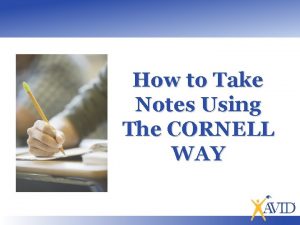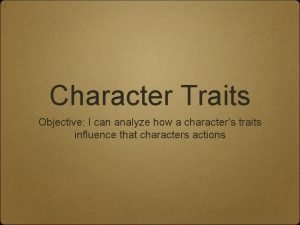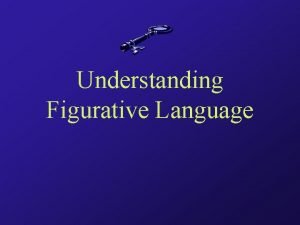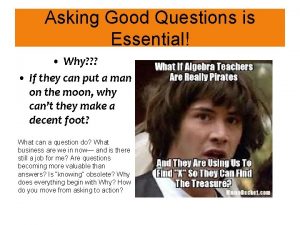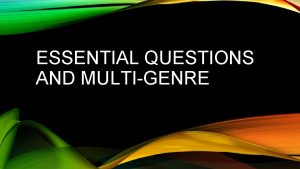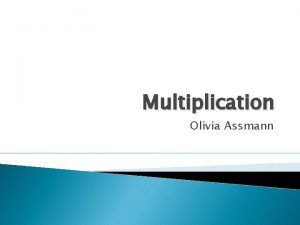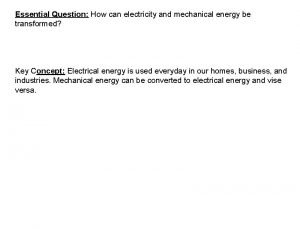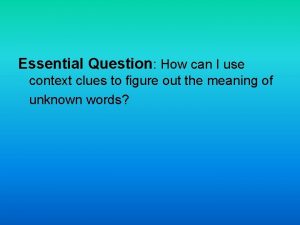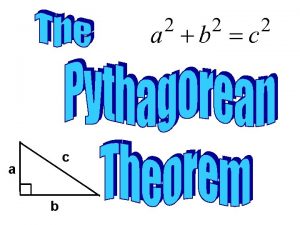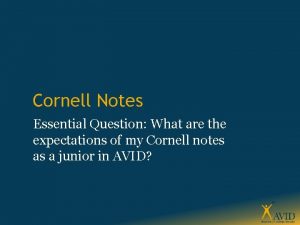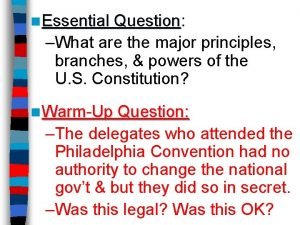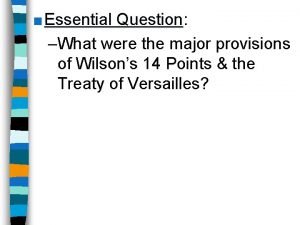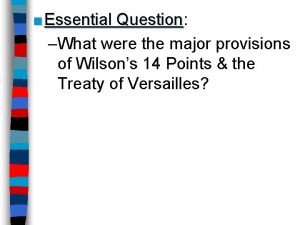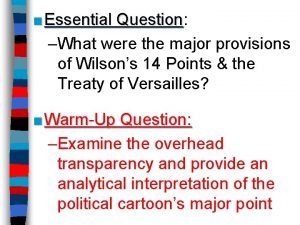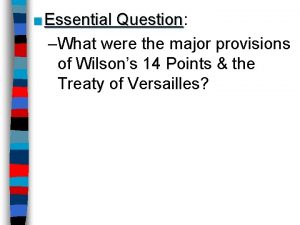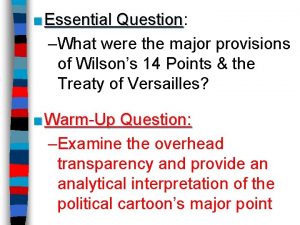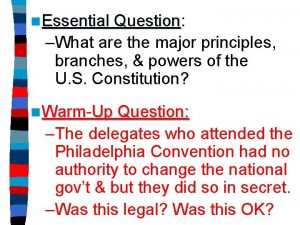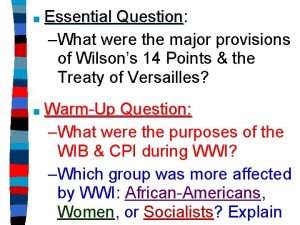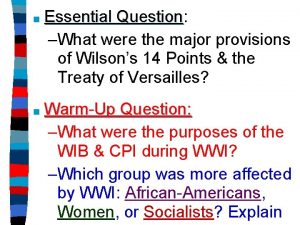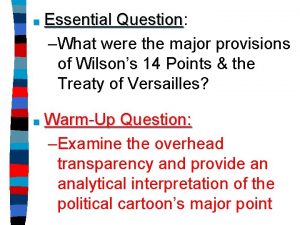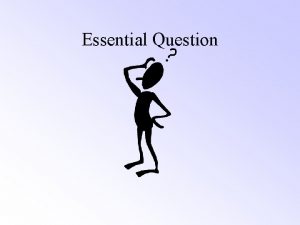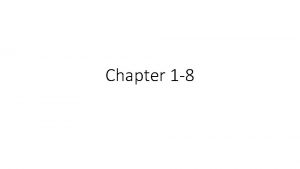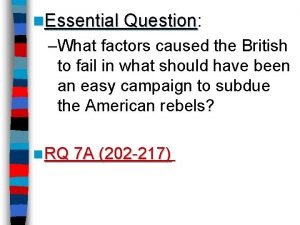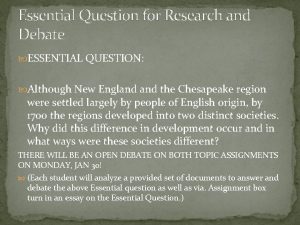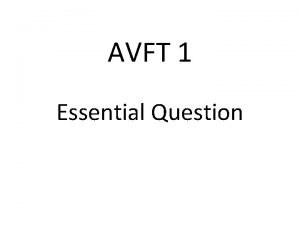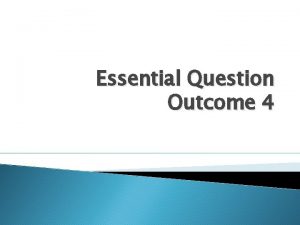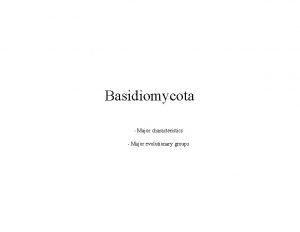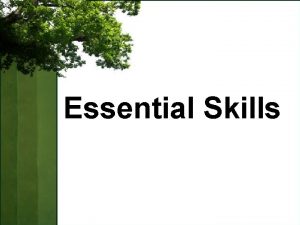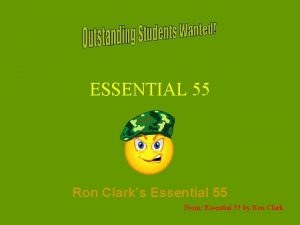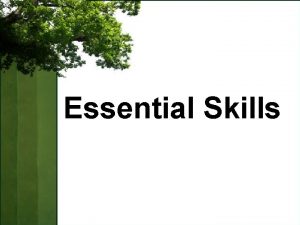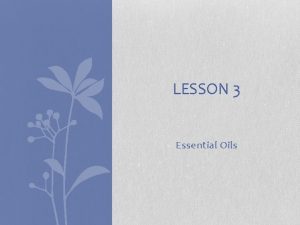n Essential Question Question What are the major



























- Slides: 27

n Essential Question: Question –What are the major principles, branches, & powers of the U. S. Constitution? n Warm-Up Question: –The delegates who attended the Philadelphia Convention had no authority to change the national gov’t & but they did so in secret. –Was this legal? Was this OK?

The Constitution

Key Ideas of the Constitution Popular Sovereignty: the people have power by voting for leaders Limited gov’t: even though the national gov’t was stronger, citizens’ liberty was still protected Federalism: the national gov’t shares power with state gov’ts

Federalism

The Constitution was a radical shift from the Articles of Confederation because it gave more power to the national gov’t than to the state gov’ts The supremacy clause establishes the Constitution (not the states) as the "the supreme law of the land"

Key Ideas of the Constitution Separation of powers: three branches with defined powers

Separation of Powers


Only Congress can of make Key Ideas thelaws, Constitution declare war, create taxes The “elastic clause” gives Congress implied powers to make laws seen as “necessary & proper” Only the Senate can approve treaties & only the House can create taxes


Article 1: Legislative Branch

Senate House of Representatives

Key Ideas of the Constitution The president enforces the laws passed by Congress The president oversees the bureaucracy (departments & federal agencies)

Article II: Executive Branch

Chief Agenda Setter Commander-in. Chief of the military Chief of State

Key Ideas of the Constitution The only court mentioned in the Constitution is the Supreme Court

Article III: Judicial Branch


Key Ideas of the Constitution Checks & balances: each branch can limit the power of the others



n Essential Question: Question –What were the arguments for & against ratifying the Constitution? –What role did the Federalists & Anti-Federalists play in the debate over ratification? n Warm-Up Question: –Why are some Americans going to oppose the new Constitution?

Ratification of the Constitution

Federalists & Anti-Federalists n Supported ratificationn Against ratification because they feared of the Constitution thatthe this gave too n Were well-organized To win ratification, Federalists Ineducated order agreed for the to Constitution to power be legitimate, to add a much Bill of Rights to the & 9 of the 13 states had liberty; to ratifyall (agree to) it protect citizens’ 13 states national gov’t n Alexander Hamilton to ratify the Constitution & Jamesagreed Madison n Argued that the authored the Constitution was an Federalist Papers to illegal change in gov’t argue for ratification n Wanted a Bill of Rights

Ratification of the Constitution

Constitution became the official the law of the land in 1789

The Constitution proved to be a successful form of government; Today, the Constitution is the oldest existing written gov’t in the world & has become a model for other nations
 Insidan region jh
Insidan region jh Essential non essential fatty acids
Essential non essential fatty acids Level 3 costa questions
Level 3 costa questions Cornell way
Cornell way Internal and external character traits
Internal and external character traits Figurative language essential questions
Figurative language essential questions What if questions to ask
What if questions to ask The pythagorean theorem
The pythagorean theorem Essential questions poetry
Essential questions poetry Individual vs. society
Individual vs. society Essential questions for multiplication
Essential questions for multiplication Essential question generator
Essential question generator Essential context clues
Essential context clues Essential question gif
Essential question gif Essential questions for pythagorean theorem
Essential questions for pythagorean theorem Cornell notes essential question
Cornell notes essential question Language
Language ưu thế lai là gì
ưu thế lai là gì Tư thế ngồi viết
Tư thế ngồi viết Thẻ vin
Thẻ vin Cái miệng xinh xinh thế chỉ nói điều hay thôi
Cái miệng xinh xinh thế chỉ nói điều hay thôi Các châu lục và đại dương trên thế giới
Các châu lục và đại dương trên thế giới Bổ thể
Bổ thể Từ ngữ thể hiện lòng nhân hậu
Từ ngữ thể hiện lòng nhân hậu Tư thế ngồi viết
Tư thế ngồi viết Giọng cùng tên là
Giọng cùng tên là Thể thơ truyền thống
Thể thơ truyền thống Hát lên người ơi
Hát lên người ơi



